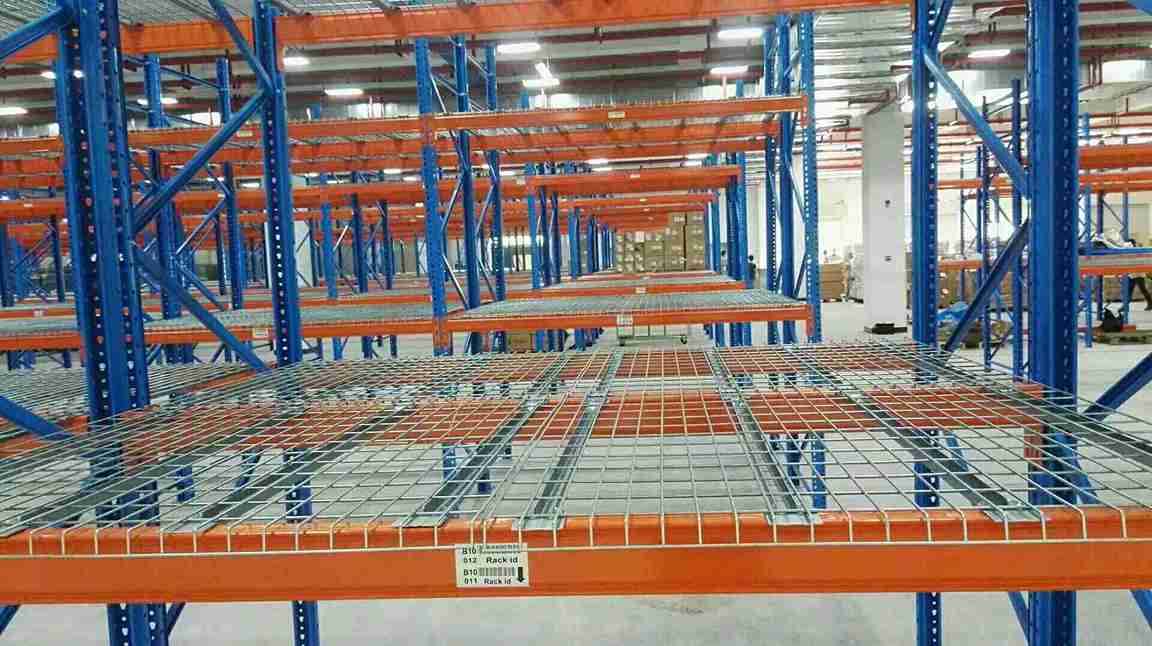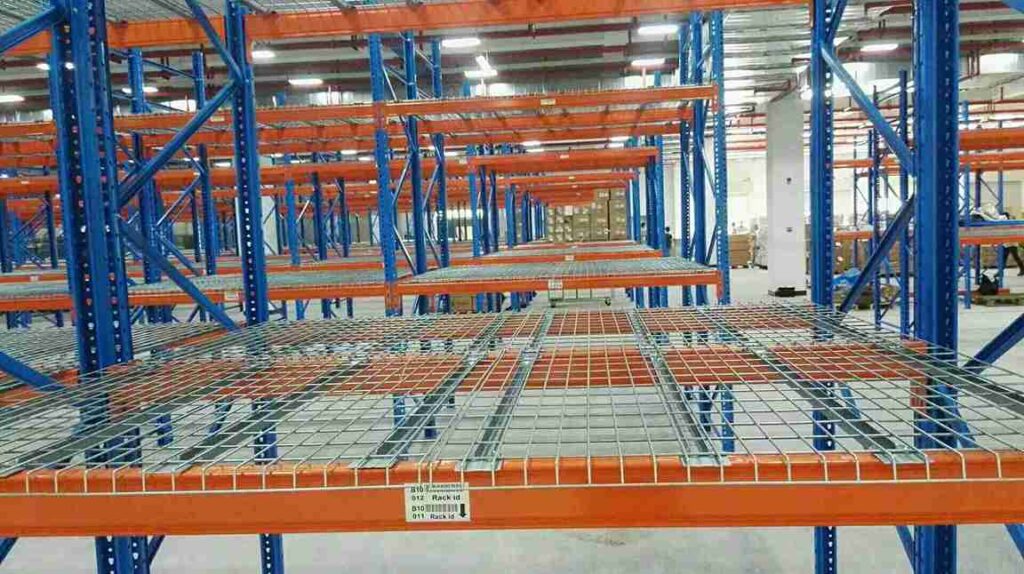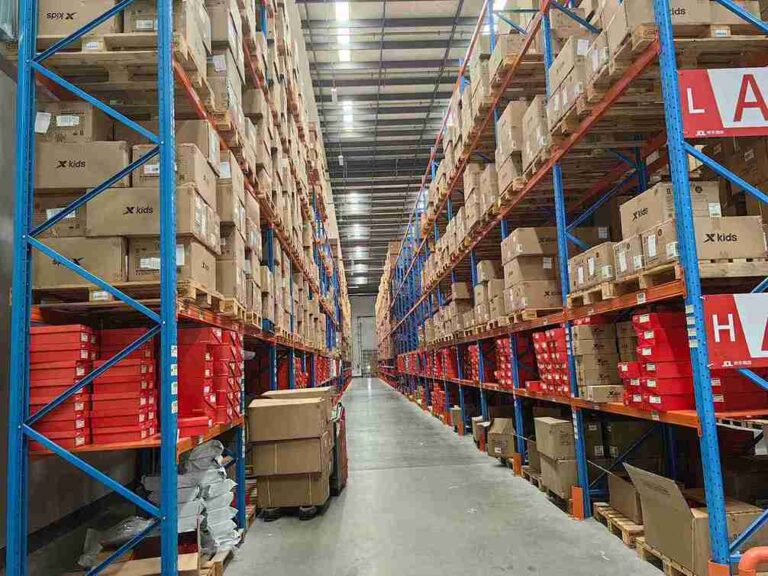📐 "First 50 Enterprise Queries Get Custom 3D Warehouse Design" Plan

The Warehousing Revolution
The logistics industry faces unprecedented challenges: commercial real estate prices have surged 38% since 2020 (CBRE), the U.S. warehouse labor shortage exceeds 450,000 workers (MHEDA), and e-commerce sales are projected to reach $7 trillion globally by 2025 (Statista). In this environment, high-density industrial racking systems have emerged as the smartest solution for businesses needing to do more with less space.
As a warehouse solutions specialist with 15 years of industry experience, I’ve seen firsthand how these systems transform operations. This guide will explain why high-density storage solutions aren’t just advantageous—they’re becoming essential for competitive warehousing.

Why High-Density Racking Outperforms Traditional Systems
The Engineering Behind Space Optimization
Modern high-density racking systems utilize three breakthrough approaches:
-
Vertical Density: By extending storage up to 40′ heights (versus traditional 20-25′ limits), facilities gain 60-80% more cubic storage capacity.
-
Aisle Reduction: Automated systems like mobile racking reduce aisle widths from 12′ to just 5′, reclaiming 30-50% of floor space.
-
Deep Storage Configurations: Drive-in systems store pallets 6-10 deep versus standard 2-deep arrangements.
Case Study: A Fortune 500 retailer implemented push-back racking and:
-
Increased pallet positions by 220%
-
Reduced order picking time by 35%
-
Achieved ROI in 2.3 years
Comparative Analysis: Density vs. Accessibility
| Factor | High-Density Systems | Traditional Racking |
|---|---|---|
| Pallets/Sq.Ft | 2.4-3.1 | 0.8-1.2 |
| Order Picking Speed | 45-60 picks/hr | 25-35 picks/hr |
| Real Estate Savings | 30-60% | Baseline |
| Ideal Inventory Turn | 4-12x/year | 1-4x/year |
Implementing the Right High-Density Solution
1. Drive-In/Drive-Through Racking
-
Best Applications: Seasonal products, beverage distribution
-
Key Consideration: Requires specialized forklift training
-
Innovation Spotlight: New anti-collision laser guidance systems improve safety by 72%
2. Pallet Flow (Gravity) Systems
-
Ideal For: Pharmaceutical cold storage (maintains 34-38°F consistently)
-
Maintenance Tip: Quarterly roller lubrication prevents 90% of jams
-
Efficiency Gain: Reduces labor costs by $4.20 per pallet handled
3. Automated Mobile Racking
-
Space Savings: Up to 80% aisle reduction
-
Tech Integration: IoT sensors predict maintenance needs with 92% accuracy
-
Sustainability Bonus: Reduces lighting/HVAC costs by 40-60%
Financial Justification and ROI
Cost-Benefit Breakdown
-
Upfront Investment: $35-85 per sq.ft. (vs. $18-30 for traditional)
-
5-Year Savings:
-
Labor: $8-12/sq.ft annually
-
Real Estate: $4-7/sq.ft annually
-
Energy: $1.50-3/sq.ft annually
-
Pro Tip: Many states offer 10-25% tax credits for automation investments that reduce energy consumption.
Industry-Specific Applications
E-Commerce Fulfillment Centers
-
Challenge: 300% peak season demand fluctuations
-
Solution: Hybrid mobile racking + automated retrieval handles 2.5x normal capacity
Cold Storage Facilities
-
Fact: Energy represents 60% of operational costs
-
Innovation: High-density systems reduce refrigerated space by 45%, cutting $140,000 annually in energy for a 50,000 sq.ft facility
The Next Generation: AI and Automation
Leading manufacturers are integrating:
-
Computer Vision: Cameras track inventory with 99.8% accuracy
-
Predictive Analytics: Algorithms optimize stock placement, reducing retrieval time by 55%
-
Robotic Integration: AMRs (Autonomous Mobile Robots) work seamlessly with high-density configurations
Implementation Checklist
-
Assessment: Conduct a SKU velocity analysis
-
Planning: Engage certified rack designers (CMRP certification preferred)
-
Safety: Budget for seismic upgrades if in active fault zones
-
Training: Allocate 40-80 hours for operator certification
-
Maintenance: Implement IoT monitoring from day one
Conclusion: The Strategic Imperative
In our work with over 200 warehouse conversions, we’ve found that high-density racking systems deliver:
-
40-75% space utilization improvements
-
18-32% labor cost reductions
-
ROI periods under 36 months in 82% of cases
The question isn’t whether to adopt these systems, but how quickly your operation can transition. As supply chain demands intensify, high-density storage represents the most effective way to future-proof your warehouse operations.
FAQs
1. How much space can high-density industrial racking save?
Depending on the system, businesses can reduce required space by 30-60% while increasing storage capacity.
2. Is high-density industrial racking suitable for small warehouses?
Absolutely—mobile racking and push-back systems are ideal for space-constrained operations.
3. What’s the typical ROI period for high-density industrial racking?
Most businesses see a full ROI within 2-5 years due to reduced operational costs.
4. Can high-density industrial racking handle heavy loads?
Yes—systems like drive-in racking support up to 3,000 lbs per pallet position.
5. Does high-density industrial racking require special forklifts?
Some systems (like narrow-aisle racking) may need specialized equipment, but many work with standard forklifts.
By implementing high-density industrial racking, businesses can optimize space, reduce costs, and enhance efficiency—making it a must-have solution for modern warehousing.
Welcome to contact us, if you need warehouse rack CAD drawings. We can provide you with warehouse rack planning and design for free. Our email address is: jili@geelyracks.com




